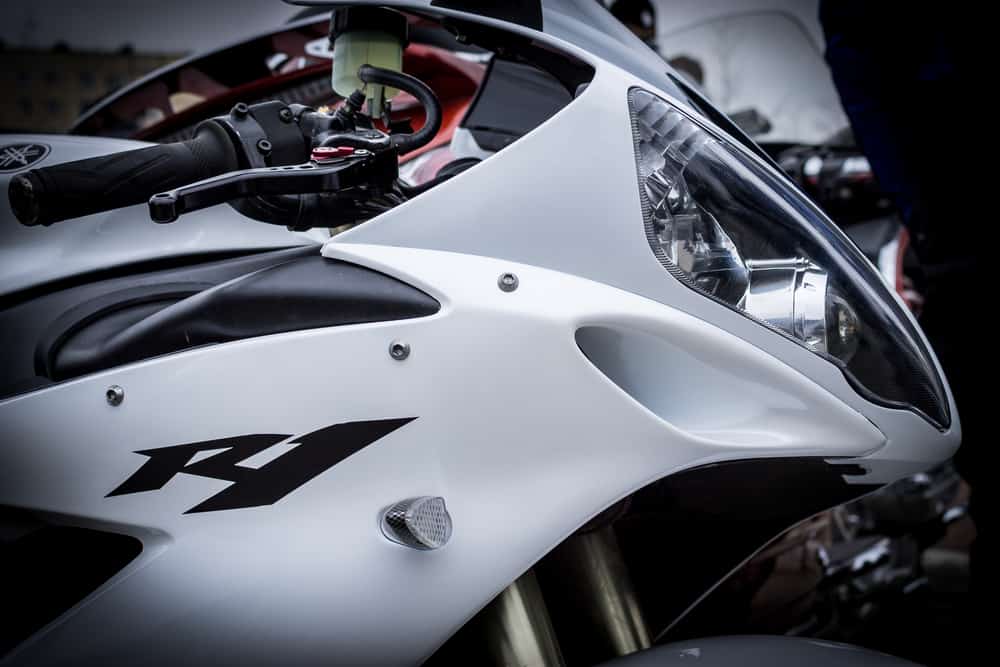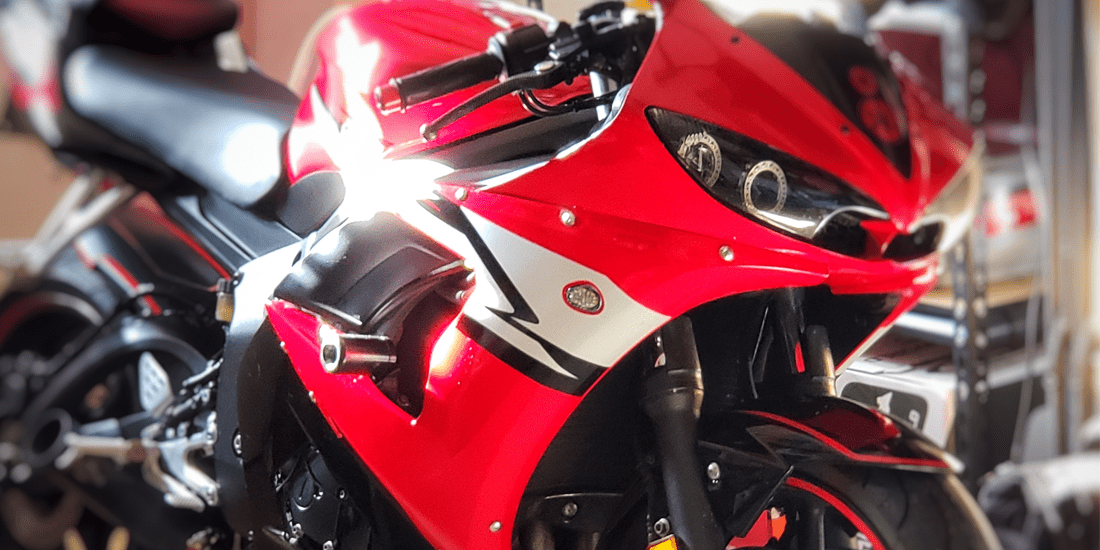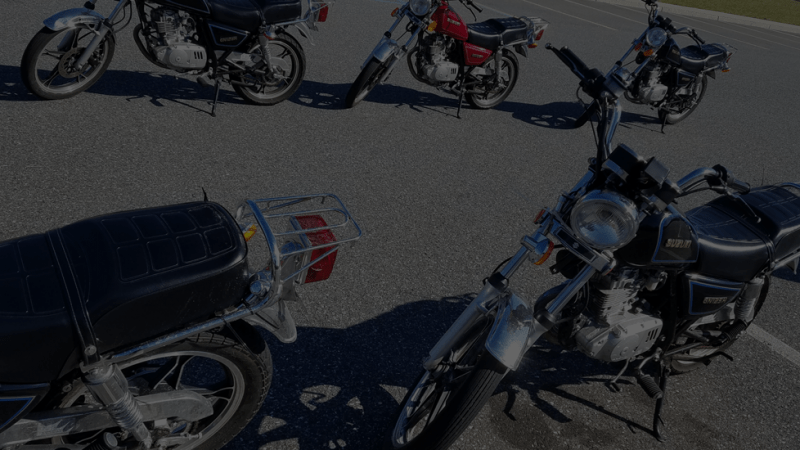When it comes to sport bikes, Yamaha has a reputation for producing some of the best in the market. Two of their most popular models, the R1 and R6, are often compared and debated among riders. Both bikes are powerful, sleek, and designed for high-performance riding, but there are some key differences that may make one a better fit for you than the other.
Engine and Performance
- The R1 is powered by a 998cc, liquid-cooled, inline four-cylinder engine that produces 200 horsepower and 82 lb-ft of torque. This engine is designed for high-performance riding and can propel the R1 from 0-60 mph in just over 2 seconds.
- The R6, on the other hand, is powered by a 599cc, liquid-cooled, inline four-cylinder engine that produces 120 horsepower and 43 lb-ft of torque. While still a powerful engine, the R6’s power output is more manageable for those new to sport riding.
- The R1’s engine is also equipped with Yamaha’s crossplane crankshaft technology, which gives it a unique and distinct character, and allows for smooth power delivery.
- The R6 also features advanced engine management system, which includes YCC-T, Yamaha Chip Controlled Throttle, that allows the rider to experience a smooth and natural throttle response, making it easier to control.
- The R1 is geared more towards experienced riders who are looking for a high-performance bike that can handle the demands of track riding and fast-paced riding on the street. Its powerful engine and advanced features can be difficult to handle for those new to sport bikes.
- The R6, on the other hand, is more suited to those who are just starting out in sport riding or who prefer a more manageable power output. Its engine is designed to deliver a balance of performance and control, making it easier for riders to handle.
- Ultimately, the choice between the two engines will come down to the rider’s level of experience and their desired riding style. The R1’s engine is designed for experienced riders looking for a high-performance bike, while the R6’s engine is designed for those just starting out or who prefer a more manageable power output.
| Specification | Yamaha R1 | Yamaha R6 |
|---|---|---|
| Engine Type | Liquid-cooled, 4-stroke, DOHC, forward-inclined parallel 4-cylinder, 4-valves | Liquid-cooled, 4-stroke, DOHC, forward-inclined parallel 4-cylinder, 4-valves |
| Displacement | 998cc | 599cc |
| Bore x Stroke | 78.0 x 52.2mm | 67.0 x 42.5mm |
| Compression Ratio | 13.0 : 1 | 13.1 : 1 |
| Maximum Power | 200.0 HP @ 13,500 RPM | 120.0 HP @ 14,500 RPM |
| Maximum Torque | 82.6 lb-ft @ 11,500 RPM | 43.0 lb-ft @ 11,500 RPM |
| Fuel System | Fuel Injection | Fuel Injection |
| Lubrication | Wet sump | Wet sump |
| Clutch Type | Wet, multiple-disc | Wet, multiple-disc |
| Ignition | TCI | TCI |
| Starting System | Electric | Electric |
| Transmission | 6-speed | 6-speed |
| Final Drive | Chain | Chain |
| Maximum Speed | 186 mph | 156 mph |
| 0-60 mph | 2.7 sec | 3.4 sec |
Handling and Suspension
When it comes to handling, both the R1 and R6 are equipped with advanced suspension systems that provide a smooth and responsive ride. However, the R1’s suspension is slightly more advanced, with fully adjustable 43mm inverted fork and a link-type rear suspension that offers a wide range of adjustability. This allows experienced riders to fine-tune the suspension to their personal preferences and riding style.
One of the main differences between the R1 and R6 in terms of handling is the wheelbase and riding position. The R1 has a longer wheelbase and a more relaxed riding position. This makes it more stable at high speeds and allows for more control during straight-line riding. The longer wheelbase also helps to reduce the bike’s tendency to wheelie, which can be a concern for some riders.
The R6, on the other hand, has a shorter wheelbase and a more aggressive riding position. This makes it more agile in tight corners and better suited for sport riding. The shorter wheelbase allows the R6 to turn more quickly and with less effort, making it more responsive to rider inputs. The riding position also puts the rider in a more forward-leaning position, which can be more comfortable for some riders during long rides.
In summary, both the R1 and R6 have advanced suspension systems that provide a smooth and responsive ride, but the R1’s is slightly more advanced. The R1’s longer wheelbase and relaxed riding position make it more stable at high speeds, while the R6’s shorter wheelbase and aggressive riding position make it more agile in tight corners. The choice between the two will come down to the rider’s personal preferences and riding style.
| Specification | Yamaha R1 | Yamaha R6 |
|---|---|---|
| Front Suspension | 43mm USD fork, fully adjustable, 4.7 in travel | 41mm fork, fully adjustable, 4.7 in travel |
| Rear Suspension | Single shock, fully adjustable, 4.7 in travel | Single shock, fully adjustable, 4.7 in travel |
| Front Brake | Dual 320mm discs, 4-piston calipers | Dual 310mm discs, 4-piston calipers |
| Rear Brake | 220mm disc, 2-piston caliper | 220mm disc, 1-piston caliper |
| Front Tire | 120/70ZR17 | 120/70ZR17 |
| Rear Tire | 190/55ZR17 | 180/55ZR17 |
| Rake | 24.0° | 24.0° |
| Trail | 4.0 in | 3.5 in |
| Wheelbase | 55.1 in | 54.3 in |
| Seat Height | 32.9 in | 33.5 in |
| Wet Weight | 441 lb | 366 lb |
Design and Features
When it comes to design, the R1 and R6 have different looks that appeal to different riders. The R1 has a more modern and aggressive design, with sharp lines and aerodynamic features that give it a futuristic look. The R1 also has a more aerodynamic bodywork that helps to reduce wind resistance and improve stability at high speeds.
The R6, on the other hand, has a more traditional sport bike look, with a sleek and minimalist design. The R6’s design is more classic and timeless, which some riders prefer. It has a more understated look that does not shout for attention. The R6 design is focused on providing a smooth and aerodynamic riding experience.
When it comes to features, the R1 comes with a range of advanced features such as a quick-shifter, traction control, and a slipper clutch. These features allow riders to experience a more advanced level of riding and can help to improve performance and safety. The R1 also comes with a range of electronic rider aids, such as selectable power modes and launch control, that allows riders to customize the bike’s performance to their personal preferences and riding conditions.
The R6, on the other hand, has a more basic set of features. It comes with features such as ABS and a standard clutch. It’s more suited to riders who want a more traditional sport bike experience and prefer a more minimalist approach to features.
In summary, the R1 has a more modern and aggressive design, with a range of advanced features that cater to experienced riders, while the R6 has a more traditional sport bike look, with a sleek and minimalist design, and a more basic set of features. The choice between the two will come down to the rider’s personal preferences and riding style. Some riders prefer the advanced features and modern design of the R1, while others prefer the more traditional look and basic features of the R6.
| Specification | Yamaha R1 | Yamaha R6 |
|---|---|---|
| Dimensions (LxWxH) | 80.9 in x 27.6 in x 45.3 in | 80.9 in x 27.2 in x 43.5 in |
| Wet Weight | 441 lb | 366 lb |
| Fuel Capacity | 4.5 gallons | 4.5 gallons |
| Transmission | 6-speed | 6-speed |
| Final Drive | Chain | Chain |
| Color options | Varies by model year | Varies by model year |
| Advance Features | Traction control, quick-shifter, slipper clutch, ABS | Traction control, quick-shifter, ABS |
Price and Value
When it comes to price, the R1 and R6 have different price points. The R1 is the more expensive of the two, with a starting price of around $16,000. This puts it in the higher end of the sport bike market. The R1’s higher price tag can be attributed to its advanced features and higher performance capabilities.
The R6, on the other hand, has a more affordable price point, with a starting price of around $12,000. This makes it more accessible to a wider range of riders, especially those on a budget. The R6’s more affordable price point does not mean that it’s any less of a bike, it’s still a great option for sport riding enthusiasts, and it’s still a great value for its price.
While the R1 may have more advanced features and higher performance, the R6 offers a great value for its price and is a great option for those who are looking for a sport bike that won’t break the bank. The R6 is a great choice for those who want to experience the thrill of sport riding without having to spend a lot of money.
In summary, the R1 is more expensive than the R6, and it has more advanced features and higher performance capabilities. However, the R6 offers great value for its price, and it’s a great option for those on a budget. Both the R1 and R6 are great sport bikes that cater to different riders, and the choice between the two will come down to personal preferences, riding style, and budget.
| Specification | Yamaha R1 | Yamaha R6 |
|---|---|---|
| Starting Price | $18,000 | $12,000 |
| Warranty | 1 Year (Limited Factory Warranty) | 1 Year (Limited Factory Warranty) |
| Insurance cost | Varies by location and personal circumstances | Varies by location and personal circumstances |
| Maintenance cost | Varies by usage, regular maintenance is required | Varies by usage, regular maintenance is required |
In conclusion, both the Yamaha R1 and R6 are excellent sport bikes, each with its own set of strengths and weaknesses. The R1 is geared towards experienced riders looking for high performance and advanced features, while the R6 is a great option for those just starting out or on a budget. Ultimately, the choice between the two will come down to your personal preferences and riding style.












